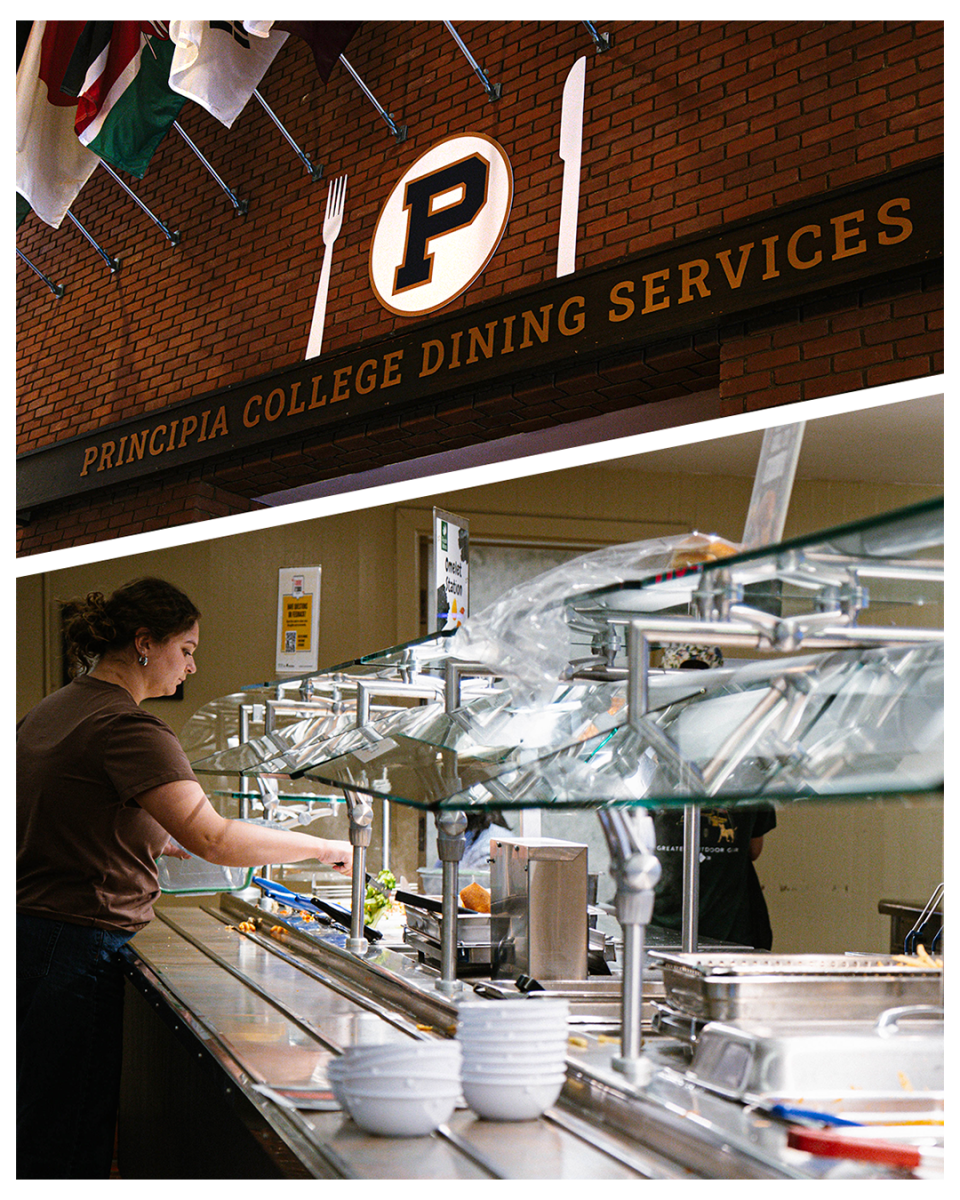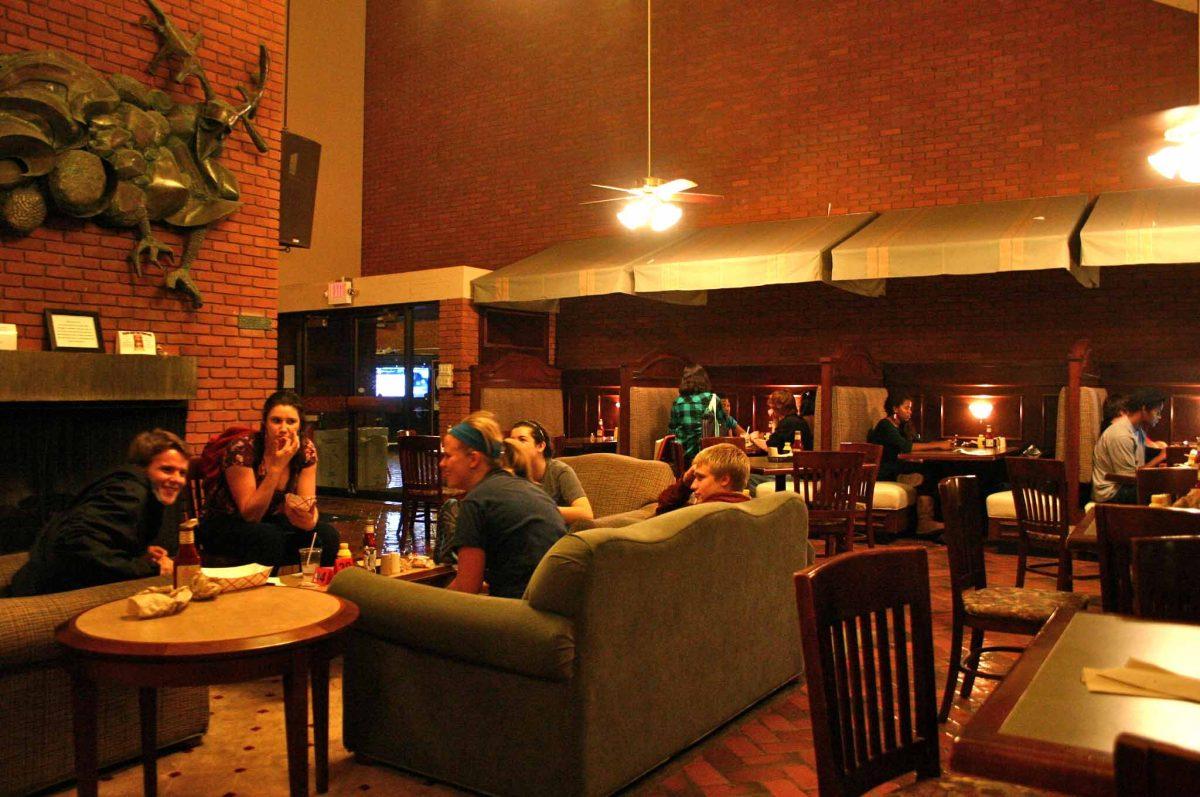Principia College students are starting the semester with a taste of something new: The college’s dining services have partnered with Fresh Ideas, a food service company, in an effort to improve the dining experience for students.
Fresh Ideas, also in partnership with other colleges such as Maryville and Blackburn, aims to revitalize campus dining by offering fresher ingredients, a wider variety of menu options, and more choices to meet different dietary needs.
Since arriving on campus, Fresh Ideas has already made visible changes to dining services. For one, they have restructured the scramble room to offer healthier non-manufactured food options. “We’re doing a lot more of what they call scratch kitchen cooking,” said Melvin Jones, the director of dining services and a representative of Fresh Ideas. With this cooking style, a lot of the ingredients used are fresh products, and the meals are fully made in the dining kitchen.
“Our team is slicing chicken for your chicken pasta. They are creating your Alfredo sauce for your chicken Alfredo … You’re not getting bottled seasonings, that’s just mixtures. We’re creating those seasonings from [the] universal [way of making] seasonings … It’s a little more work into it, but it’s also in for a better taste profile,” Jones said.
With this scratch kitchen cooking style, students say they taste the difference in their meals. “The food quality we have now is better than before,” said Luigi Furlan, a senior majoring in Civil Engineering.
One of the most noticeable changes for students is the introduction of meal swipes, a system new to current Principia College students. Rather than having traditional meal points, which required students to pay for each item on their plate, they can now swipe their card during mealtimes and have access to as many helpings as they wish to eat, without any additional cost.
“I like how I can scan once and get all the food I want,” said Luc Savoye, a senior majoring in Computer Science.
Savoye isn’t alone in preferring the buffet style. Students across campus say the change to meal swipes is a plus because they can eat as much as they want. “In previous semesters, I’ll eat what I want at the beginning of the semester, and halfway through, I’ll start eating less so I don’t run out of points,” Furlan said.
While students are in favor of having meal swipes, questions still linger in their minds about how the new system works.
“The swipe is just for us,” Jones said. It’s a way to track how many people are coming to eat at different hours of the day. Students’ meal plans are already included in their Prinbill. Unlike in previous years, students no longer have the option to choose their meal plan; everyone is required to pay for the same meal package.
Jones added that students are welcome to get food whenever they want from dining services within their work hours, which are from 7 a.m. to 8 p.m. Monday through Friday. However, hot meals won’t always be available. Hot lines will only be accessible from 7 a.m. to 9 a.m., 11 a.m. to 1 p.m., and from 4 p.m. to 7 p.m., with other options for food in between those times, such as continental breakfast, light lunch, and late dinner. During the weekends, on Saturdays and Sundays, dining services only offer brunch from 10:30 a.m. to 1:30 p.m., and dinner from 5 p.m. to 6:30 p.m.
Along with the unlimited swipes is 250 Prin Bucks, which can be used at the Pub and the College Store. These points can also be used at dining services for specific purposes. Students with guests can pay for their guests’ meals in the dining room using their Prin Bucks.
Other options, such as a credit card, are available for guests who prefer to pay themselves. The guest pricing includes $9 for breakfast, $10 for lunch, and $11 for dinner.
Faculty and staff also have their special meal package, including five free meals annually, which are loaded on their ID cards, according to a watercooler post by the Sr. Director of Business and Operations Adam Davis. For faculty and staff, their pay-as-you-go plan is $7, but there are also meal packs that can be purchased; $60 for a 10-meal pack and $200 for a 40-meal pack.
In addition to the simplified meal plans, dining services have also made changes aimed at reducing waste on campus. This semester, disposable to-go boxes and trays have been removed, with reusable containers now available for students to purchase for $7 with their Prin Bucks or credit cards. Jones said part of the feedback he received was that when the disposable boxes go back to student rooms, they often aren’t properly emptied, which stinks up the environment and causes unnecessary trash buildup. The reusable containers, which can be returned and cleaned in the dining halls, aim to address these issues while promoting a more sustainable take-away dining experience.
“Basically, what happens is, especially at buffets, [is that] people will grab multiple items and not eat them,” Jones said. “Even now with just plates … there are still lots of leftovers [on multiple plates]. Now imagine having three or four of those on one person’s tray.”
For some students, having trays is less about grabbing more than they can eat and more about convenience. “I’m holding a plate and maybe a bowl, I don’t have a third hand for a water cup, so I can’t get water on my first go around,” Savoye said. “So I’d have to come back through and then get water, which I feel adds more traffic [to the scramble room].”
Savoye, who likes to build his own meals by visiting multiple stations, often finds himself holding a plate in one hand while trying to manage everything else, getting chicken, rice, and seasonings with the other hand. He has purchased his own tray, but still runs into the same problem whenever he forgets to bring it with him to meals.
Despite the improvements to dining logistics, some students say they still face challenges with the food options provided. “On some days, there’s only fried stuff, which I don’t think is good for athletes who are trying to watch their diets,” said Sana Udoekong, a sophomore majoring in Computer Science and Mathematics. Other students also said they noticed a lack of protein options on the hot line on certain days.
Furlan said he’d prefer having lunch on the weekends rather than brunch, which he isn’t a fan of, and has been cooking for himself during that time.
Currently, dining services follow a five-week menu cycle, which determines what meals are available each day. However, the menu is expected to evolve, particularly with the arrival of a new chef on Monday, Sept. 15.
As students adjust to the new system and menu, dining services are keeping an open line of feedback to ensure the changes meet both convenience and nutritional needs. “My door is always open,” Jones said. There are also QR codes around the dining room to give feedback.




